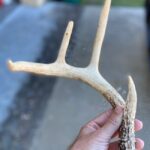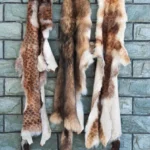Anyone who hunts big game in North America has probably hunted a whitetail deer. But what about the Coues Deer?
The coues deer is a much more elusive and skittish subspecies of whitetail..found in a small isolated pocket of the Southwest.
This article is going to explore the difference between the coues deer vs whitetail deer, so you’ll know exactly what you’re getting into if you decide to pursue the whitetail’s smaller cousin.
Table of Contents
- Whitetail vs Coues Deer Size
- Appearance Differences Between Coues And Whitetail Deer
- Range And Habitat
- Feeding Habits
- Behaviors Of Coues And Whitetail Deer
- Differences Between Whitetail And Coues Meat
- Which Is More Popular For Hunting, Coues Or Whitetail?
- Frequently Asked Questions
- Conclusion
- Related Posts
Whitetail vs Coues Deer Size
The biggest distinction in size between a coues and a whitetail is their height difference. On average, a whitetail is 42 inches tall while a coues stands a solid 10 inches shorter at 32 inches.
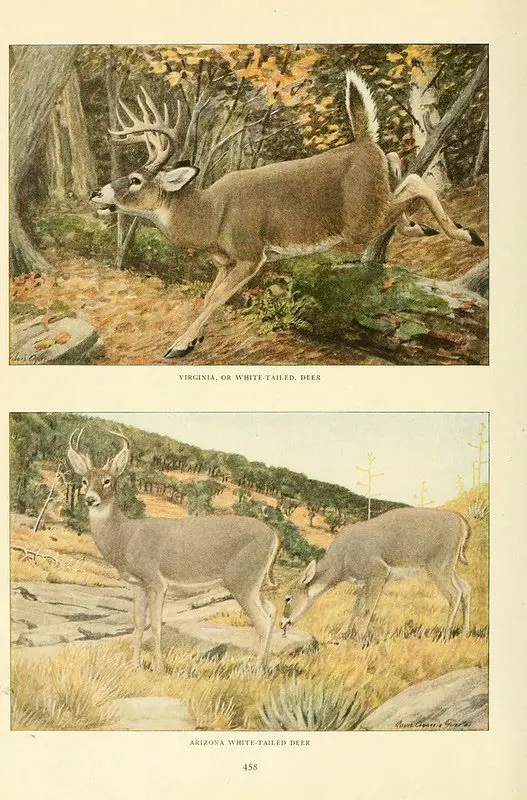
Weight
The coues is not only shorter than whitetail but also substantially smaller. A large coues buck will come in at just over 100 pounds, while a whitetail buck weighs 100-300 pounds.
For coues does, the average weight is 65-80 pounds while their larger whitetail cousins start at just under 100 and can grow up to 200 pounds.
Whitetail deer are substantially larger than coues deer as well as being noticeably taller.
Appearance Differences Between Coues And Whitetail Deer
In addition to the size differences, several physical differences between the two will help you distinguish between a coues and whitetail deer.
Coues Coloring, Ears, And Tails
Coues and whitetail have similarly colored coats. So it can be hard to distinguish the two from coat alone.
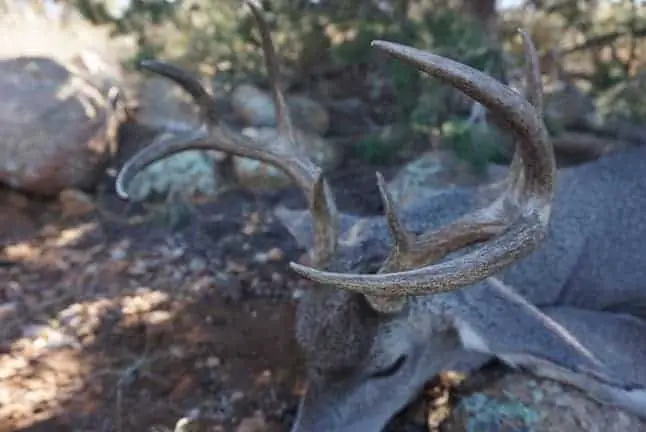
Coues deer have slate gray or salt and pepper colored coats in the winter which they shed in the spring and are replaced with a reddish coat.
The reason for the changing color is to help them blend in better with a changing environment and to keep them camouflaged from mountain lions – one of their top predators.
Their undersides are either a white or buff color and they have white halos around their eyes along with white stripes around the muzzle. The top side of their tail varies from reddish to gray or black depending on their genetics.
The bottom of the tail is always white and is used to flag other deer to alert them to danger.
Other physical characteristics of coues deer are that both their tail and ears are large when looked at in proportion to the rest of their bodies.
Their longer tail, in conjunction with its white underside, is used to better signal danger to other deer. Their large waving white tails are the reason that hunters have given them the name “fantail” deer.
Coues’ larger ears have nothing to do with improved hearing as you might suspect and everything to do with cooling their bodies. Their larger ears hold a system of blood vessels that allow the deer’s blood to cool before returning it to the rest of their body.
Whitetail Coloring, Ears, And Tails
Like the coues, whitetail deer change their coats with the seasons. In the spring and summer, whitetails have reddish coats like coues before growing in a grayish-brown winter coat.
Whitetails have a brown rump with a brown tail that has a white underside. The underside of whitetails is also white and they have white markings on the throat and around the eyes and nose.
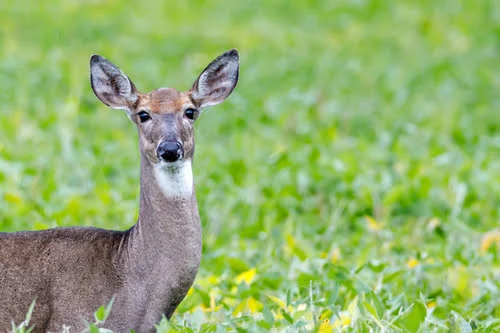
Unlike coues, whitetail deer have smaller ears and tails that are proportionate to their body size.
Range And Habitat
While the whitetail deer is one of the most adaptable deer and can live anywhere, the coues is less so and limits its range to only Arizona, New Mexico, and Mexico.
The whitetail deer, however, lives in southern Canada and every U.S. state except a couple of Southwest states, Alaska, and Hawaii.
Whitetail Habitat
Whitetail deer prefer to live in a habitat that’s a mixture of hardwood forests, meadows, bushy areas, and pastures. They are also highly adaptable which allows them to find suitable habitats across a large portion of the U.S.
Due to harsh winters in some parts of their range, whitetail rely on forests to provide some warmth and protection from harsh winters.
Coues Habitat

Coues on the other hand prefer hot, arid mountain habitats, and live at an altitude of 2,500-10,000 feet. They like a mixed habitat of juniper, evergreen oaks, and pinion pine.
While they mostly live in arid mountains, they can also be found in rocky deserts in regions near these mountains.
Feeding Habits
There aren’t any differences between what whitetails and coues eat. Both are herbivores and browse or eat forbs for sustenance. They are also both very selective eaters, despite the whitetail being very adaptable in other ways.
Neither coues nor whitetail can eat grass, as their bodies cannot process it and they will die of malnutrition.
Behaviors Of Coues And Whitetail Deer
The biggest behavioral difference between coues and whitetail is that coues are notorious for being much more skittish than whitetails.
Coues Deer Behavior
Coues will run from something as small as a gust of wind or the whiff of an unfamiliar scent. They are sometimes referred to as “Gray Ghosts” because they stay under cover most of the time to avoid being spotted by hunters, mountain lions, or other perceived threats.
The coues are so skittish that they will not bed down, feed, or stay in the same vicinity as cows.
While whitetail has been spotted grazing with cattle, coues will move on to another food source well away from their neighboring bovine population.
Coues are also known to be more aggressive when fighting for a mate during the rut than their whitetail cousins.
Whitetail Deer Behavior
Whitetails, although skittish, are a braver breed than coues. They are known to feed in small herds in open pastures while the coues remain under cover to avoid detection.
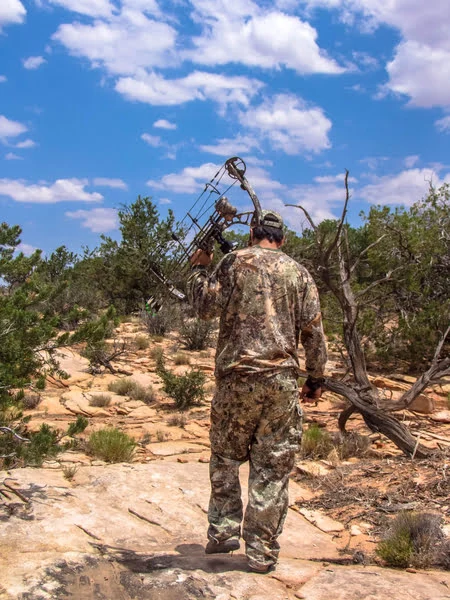
Coues And Whitetail During The Rut
Another distinct difference in behavior between the two is when they rut. The whitetail ruts from mid-October to early December while coues rut later from the end of December to February.
Differences Between Whitetail And Coues Meat
Whitetail is a favored game meat among hunters and has risen in popularity due to its availability. However, to some, it has a “gamey” flavor, and depending on the animal, processing, and cooking it can be tough.
Coues on the other hand are almost considered a delicacy. It has a mildly nutty flavor with a subtle sweetness to it. Coues is not gamey and is very tender and lean, especially when compared with whitetail. It is commonly described as being a cross between veal and lamb.
Related: Mule Deer vs Whitetail Taste Differences, Explained!
Whitetail, on the other hand, can be very fatty which can lead to a very gamey taste and also an unpleasant waxy feeling in the mouth after eating it.
While it is possible to minimize the gamey flavor and waxy mouth feeling of whitetail by removing all fat during processing, the flavor and tenderness cannot compare with coues.
As with any game, it is important to process both coues and whitetail meat properly and to know how to cook it appropriately to bring out the best flavors of each.
Which Is More Popular For Hunting, Coues Or Whitetail?
Both whitetail and coues are very popular for hunting. Whitetails are one of the most popular big game animals in the U.S. thanks to their extensive range and large population.
Coues Deer are one of Arizona’s top game animals due to their elusiveness which makes them very appealing to hunters who are looking for a challenge.
Hunting season is also 1-2 months longer for coues than for whitetail which adds to its appeal.The more popular deer to hunt comes down to how close hunters live to their range.
Whitetails are typically more popular simply because they live almost everywhere hunters live. Whereas coues only live in two states.
Frequently Asked Questions
Do Coues And Whitetail Crossbreed?
Coues do not crossbreed with whitetail but have been known to crossbreed with mule deer.
How Long Do Coues Keep Their Antlers?
Coues grow their antlers from June to September and shed them from April to May.
Related: Is It Legal To Take Antlers From Roadkill Deer?
Are Coues The Smallest Whitetail Subspecies?
Coues are not the smallest whitetail species, key deer that live in the lower Florida Keys are the smallest subspecies of whitetails.
Unfortunately, key deer are on the endangered species list, so coues is the smallest subspecies of whitetail deer that can be hunted.
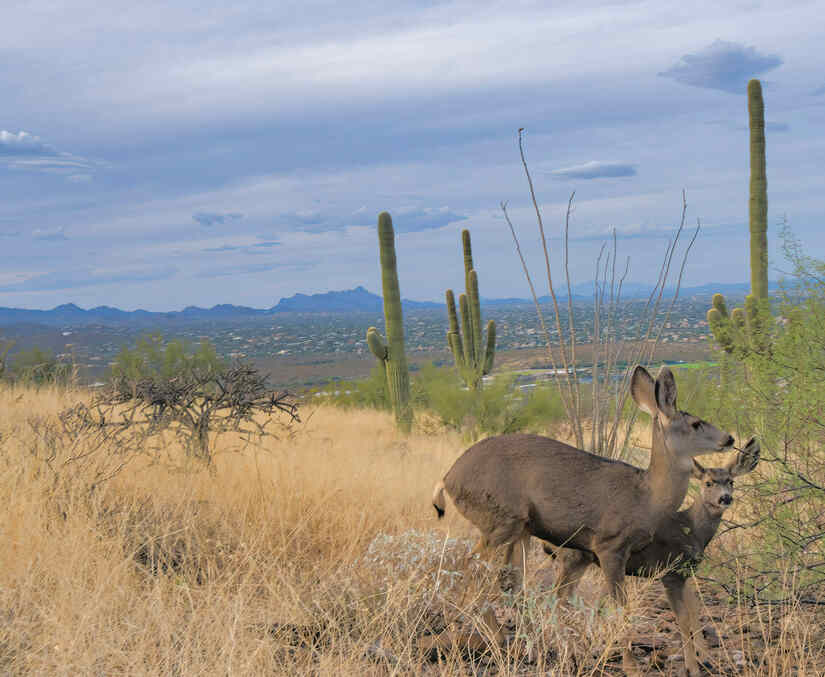
Conclusion
While whitetail deer share a lot in common with their smaller cousins the coues deer, they are larger in size, have smaller ears and tails, are not as skittish, have a much larger range, and are found at lower altitudes.
Hopefully, now that you know the difference between the two, you will have the privilege of bagging both someday.
You May Also Like: Axis Deer vs Whitetail…You Should Know These Differences!

